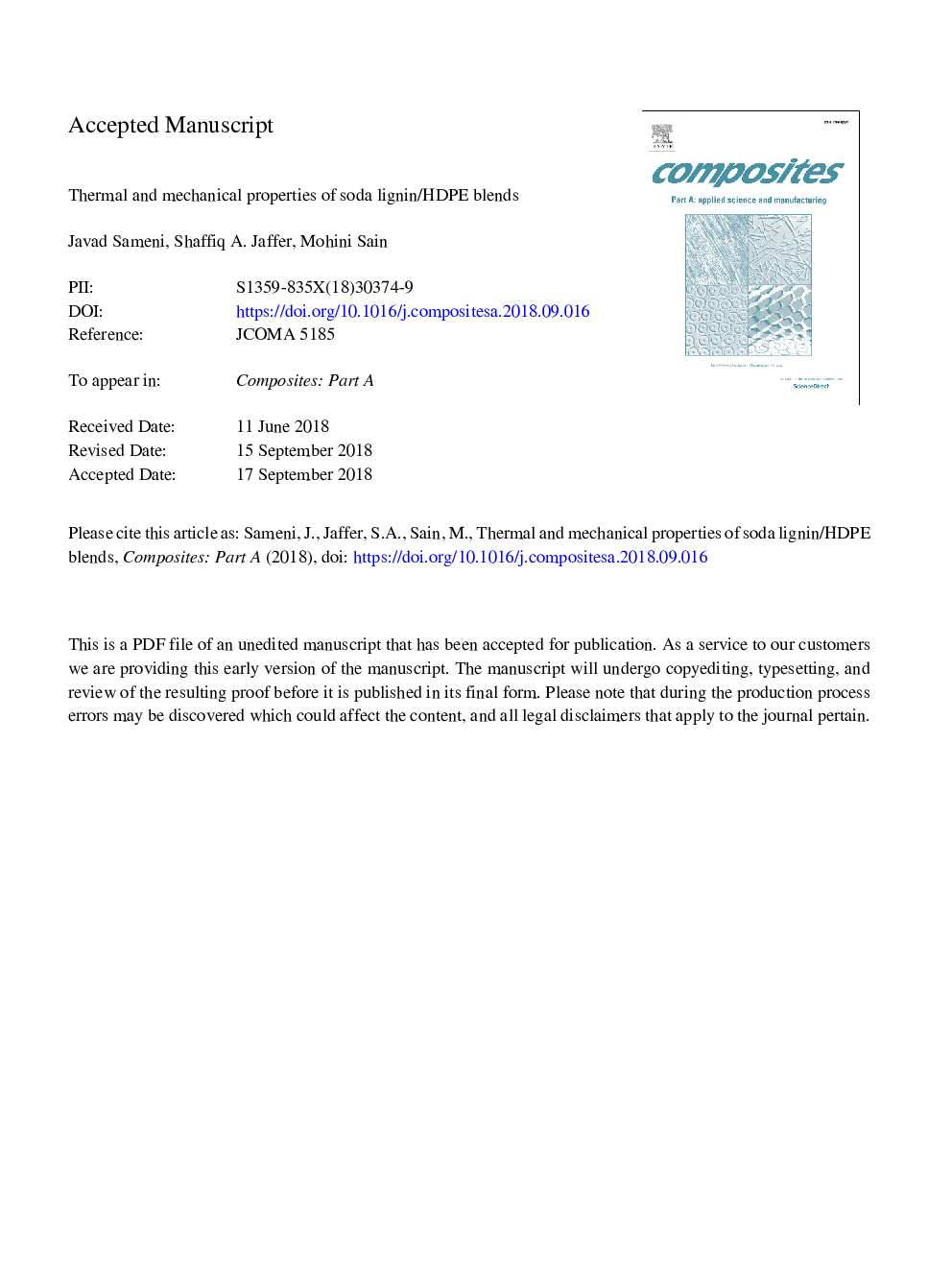| Article ID | Journal | Published Year | Pages | File Type |
|---|---|---|---|---|
| 11026774 | Composites Part A: Applied Science and Manufacturing | 2018 | 33 Pages |
Abstract
Environmental friendlier polymer blends are targeted by the packaging and automotive industry at comparable or lower cost through the use of renewable resources. Non-wood soda (sulfur-free) lignin was blended with high density polyethylene (HDPE) at 10, 20 and 30% w/w at the mixing temperature of 150â¯Â°C which is approximately: 20â¯Â°C above the melting point of HDPE, 20â¯Â°C above softening temperature of lignin and 20â¯Â°C below degradation temperature of lignin. Addition of soda lignin to HDPE matrix at a proper processing temperature resulted in blends with improved tensile and flexural strength as well as the moduli (Young's and flexural) compared to the properties of virgin HDPE. Thermal studies showed that the melting temperature and degradation temperature of the blends were decreased by addition of lignin. Maleic anhydride-grafted-polyethylene (MAPE) was used as compatibilizer in the blends, however the mechanical properties of the blends were not improved by addition of MAPE.
Related Topics
Physical Sciences and Engineering
Materials Science
Ceramics and Composites
Authors
Javad Sameni, Shaffiq A. Jaffer, Mohini Sain,
